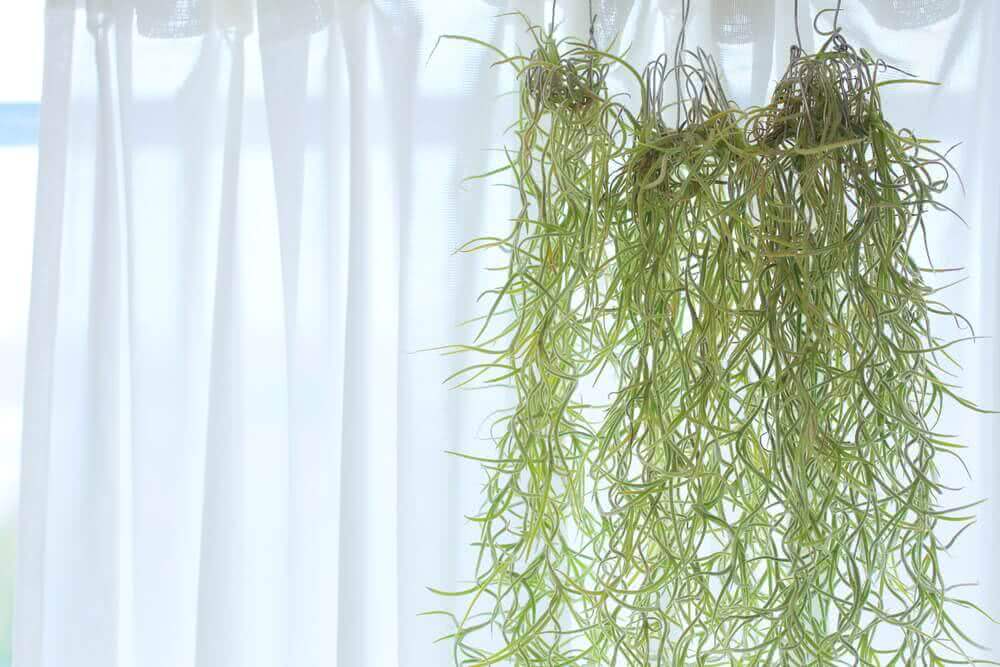What are air plants?
Air Plants, commonly known as Air Ferns or Tillys, are coined as Tillandsia by plant experts. Available in 730 species of evergreen—perennial flowering plants they belong to the family Bromeliaceae. Air plants can thrive just about anywhere in forests and mountains to deserts and swamplands.
The USP of Tillandsia plants is that they are unique and their roots can anchor themselves to other objects—mainly trees. Hence botanists call this plant an epiphyte. Air Plants are neither parasitic nor require soil. They accumulate water and nutrients through Trichomes - structures in their leaves. The nutrients occur in the form of microorganisms, decaying organic matter, and dust. As the roots are not crucial for growth, they are typically removed to improve plants appearance.

Are you looking for keeping your air plants happy and healthy for years? Follow these basic guidelines to provide natural conditions for your air plants:
Air Plant Care Instructions:
1. Light:
Usually Air Plants in their natural conditions thrive live under the canopy or shelter of other plants and prefer filtered sunlight. Indoors or close to a window setting is an ideal location. Another good option is artificial light. Try to keep your air plants close to the artificial light. This plant species does not require a day/night cycle, so you can turn off the lights at night. Buy indoor plants online.

2. Water:
Air plants gather all of their nutrients from organic matter found in rainwater and dust in the air. These microorganisms are removed from our tap water to make it safe for human consumption. Tap water will dampen your plant, but it won’t feed it. If possible, collect a bowl of rainwater, birdbath water, or pond water which has a high organic matter content. Even if you can’t see them, the microorganisms are there.
Air Plants prefer humidity above 50%, but maintaining that level of humidity is not possible in homes or offices. Fortunately, air plants can hold on to the water they collect for a few days. Broader leaf plants like Xerographica and Fasciciculta can hold water longer and only need to be soaked once in a week.
Thin leaf plants like Argentea, cannot retain water as long and should be soaked twice a week and misted heavily every few days. The Ionantha and Scaposa are somewhere in the middle. A weekly soak and an occasional misting are ideal. This may vary depending on the climate in your area.
To soak air plants, fill the bowl partially with the collected water. Place your plants upside down and let the base be out of the water. After a couple of hours, remove the plants and let the water drain on a towel. For misting remove plants from containers to avoid water logging.
Mist heavily until water runs off the plant, and place the plant to dry in an area with good air circulation. As the plant absorbs the water, it will turn vibrant green. After taking in enough water, the trichomes will close, and absorption will stop. As the plant will dry, the silver sheen of the trichomes will return. This is normal. The most crucial thing is to let the plants dry thoroughly between watering as they are susceptible to rot if left wet too long. You would notice plant rot as a black or purple colour would creep up from the base of the plant.
Other Watering Tips:
- Both water and softened water are high in Sodium. This high salt content would kill the plant.
- Distilled water will leach nutrients and has no nutritional value for Air Plants.
- When the plant is in bloom, do not wet the flower.
3. Temperature:
Most Air Plants grow in temperatures between 50 and 90 degrees Fahrenheit. They will not survive an overnight frost. Read about how light affects the growth of a plant.

4. Bloom:
Most Air Plants only bloom once in their lifetime. The flowers are pretty spectacular.
5. Pups:
After the bloom, the “mother plant” will focus entirely on producing pups or offsets. Pups show up at the base of the plant and appear like new leaves at first. Only after these pups attain 1/3 size of the mother plant, they can be plucked off. One mother plant can produce approximately 12 pups.
6. Fertilizing:
Fertilizing will spur growth and encourage bloom, but it isn't essential to keep air plants alive. You can spray them lightly with a bromeliad specific mixture once a month after soaking or misting. Over fertilizing will burn your plant. Buy fertilizer online in India.

Where to buy air plant?
Choose from a variety of air plants at your very own Ugaoo.com The newly added range is simply stunning and would help you explore a new aspect of gardening altogether. Buy air plants online.














